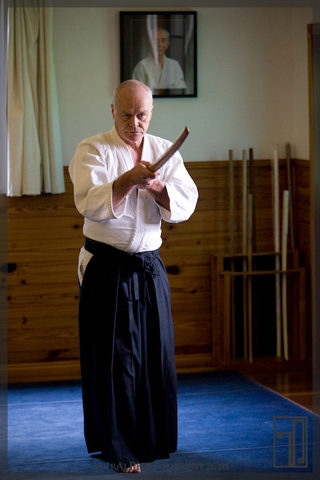The Bokken
 The Bokken is a Japanese wooden sword used for training. It is about the size and shape of a Japanese katana but it is far cheaper and a lot safer than a live blade in sword related arts such as kendo, aikido and kenjutsu.
The Bokken is a Japanese wooden sword used for training. It is about the size and shape of a Japanese katana but it is far cheaper and a lot safer than a live blade in sword related arts such as kendo, aikido and kenjutsu.
Heavier bokken are designed to develop strength and technique, often used in suburi (solo cutting exercises). However, the heavier weight of the suburi bokken makes it less suitable for paired practice or kata.
Historically, the bokken can be traced back as far as the Japanese sword. It was used for the training of battlefield warriors. It was also the wooden training tool for those martial artists interested in learning the art of the sword.
It was during the Muromachi Period 1336-1600 A.D. that the use of the bokken became popular. This was when the warriors began dueling against a single opponent instead of fighting in a battlefield situation.
Miyamoto Musashi, a kenjutsu master, was well known for fighting fully armed opponents with only one or two bokken. It is legend that he defeated Sasaki Kojiro with a bokken that he had carved from an oar while travelling on a boat to the arranged island for the duel.
The Aikido Bokken of today hasn’t changed much from that used centuries ago in feudal Japan. Although they are made in various parts of the world, the most popular ones still come from Japan and are made of Japanese red oak or white oak. White oak bokken are a little stronger, so are less likely to be damaged in contact training.
The parts of the Aikido bokken are the same as the katana:
- Tsuka – the handle
- Ha – the edge
- Kissaki – the tip
- Monouchi – the cutting portion of the edge, the 1/3 closest to the kissaki
- Mune – the back of the blade
- Chu-o – the middle third of the blade
- Tsuba moto – the third of the blade closest the handle
- Tsuba – the guard, not present on most Aikido bokuto
- Shinogi – the ridge between the mune and the edge
- Shinogi-ji – the flat plane between the mune and the shinogi
- Jigane – the flat plane between the shinogi and the temper line (edge)
- Tsuka gashira – strictly the pommel fitting, butt end of the bokuto
